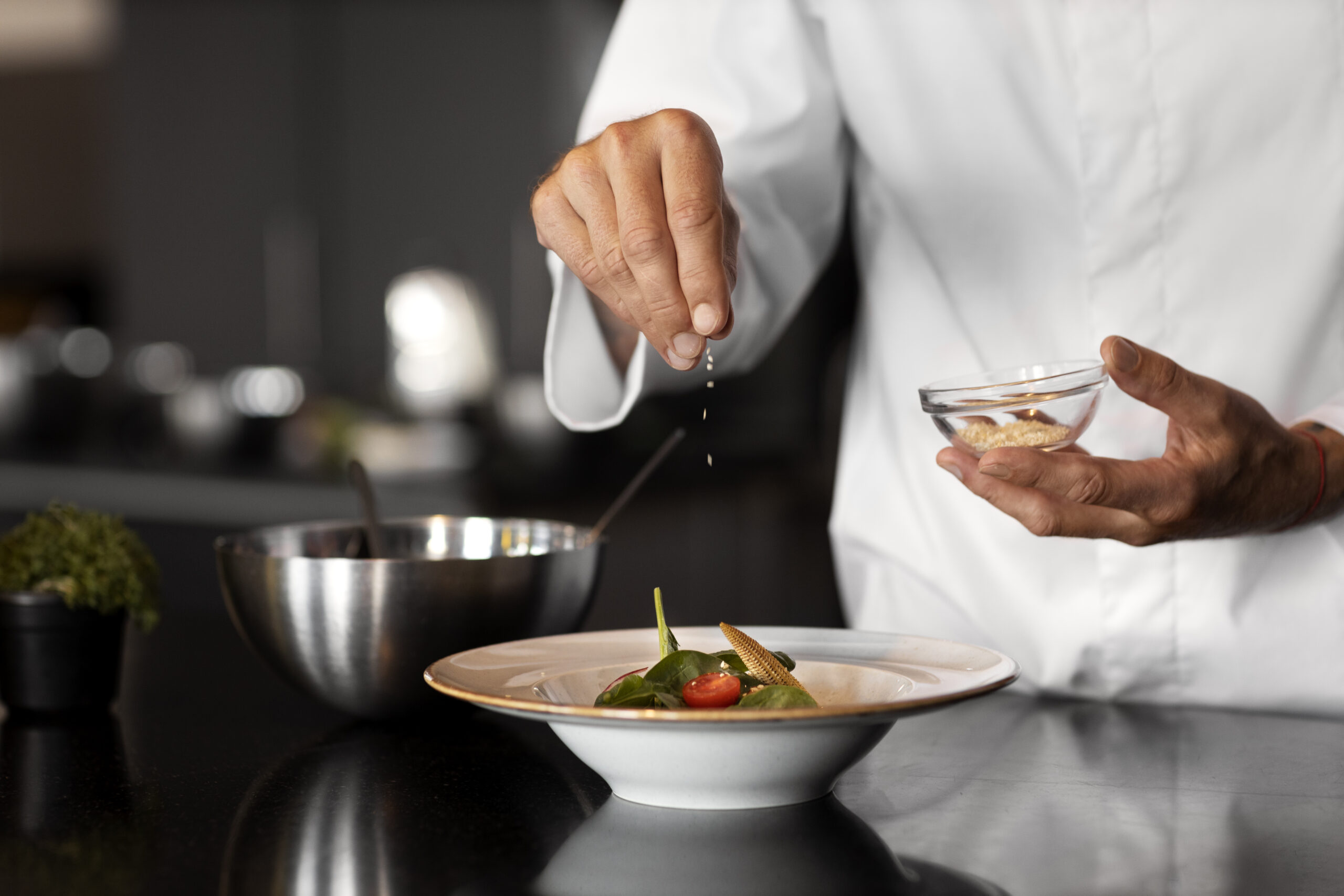Introduction
Food presentation is an integral part of the dining experience, and it’s often said that we eat with our eyes first. The way a dish is presented can enhance its flavors, elevate its appeal, and turn a meal into a memorable experience. Master the art of food presentation offers the opportunity to explore this art form, transforming ordinary ingredients into visually stunning masterpieces. In this article, we’ll delve into the world of food presentation classes, exploring what they entail and why they are worth considering.
1. The Artistry of Plating
Food presentation is, at its core, a form of artistry. It involves arranging food on a plate in a way that is visually appealing and harmonious. Just as a painter uses a canvas to create a masterpiece, a chef uses a plate to craft a culinary work of art. Master the art of food presentation teaches students the fundamentals of plating, including techniques for balancing colors, textures, and shapes to create visually striking dishes.
2. Culinary Techniques and Skills
Food presentation classes aren’t limited to arranging food; they also cover essential culinary techniques. Students learn how to prepare ingredients, cook them to perfection, and choose the right components for a dish. These classes often incorporate knife skills, cooking methods, and sauce preparation, as these are crucial aspects of creating well-balanced and delicious plates.
3. Understanding Flavor Profiles
An integral part of food presentation is understanding flavor profiles. Students discover how different flavors complement or contrast with each other, and how to use this knowledge to create memorable taste experiences. By pairing ingredients thoughtfully, they can enhance the overall enjoyment of a meal.
4. The Role of Texture
Texture plays a significant role in how we perceive food. Crispy, crunchy, creamy, or tender textures can greatly influence our dining experience. Food presentation classes teach students how to incorporate a variety of textures into their dishes, ensuring a delightful contrast that keeps diners engaged with every bite.
5. The Importance of Color
Color is a powerful element when you have to master the art of food presentation. It can evoke emotions and set the tone for a meal. Students in these classes learn about the color wheel and how to use it to their advantage when plating. The use of vibrant, contrasting, and complementary colors can make a dish more visually appealing and appetizing.
Master the Art of Cooking Safely with These Insider Tips
6. Plate Selection and Garnishes
Food presentation goes beyond the food itself; it also involves selecting the right plates, bowls, and utensils to showcase the dish. Additionally, garnishes are used to add the finishing touches to a plate. Food presentation classes cover these aspects, helping students choose appropriate serving ware and teaching them how to use garnishes to enhance the overall presentation.
7. The Role of Culture and Tradition
Food presentation is often influenced by cultural and regional traditions. These classes explore how different cultures approach the art of plating, highlighting the importance of cultural context in creating visually stunning dishes. Students gain an appreciation for the diversity of culinary traditions worldwide.
8. Creative Expression
Food presentation classes encourage creativity and self-expression. Just as an artist’s style is unique, a chef’s plating style can be distinctive. These classes provide a platform for students to experiment with their creativity, pushing boundaries and developing their own signature plating techniques.
9. The Business of Food Presentation
For those looking to pursue a career in the culinary industry, food presentation classes offer valuable insights into the business side of the profession. They cover topics like menu design, food photography, and the role of presentation in customer satisfaction. These skills are crucial for success in the competitive world of hospitality and dining.
10. Elevating Home Cooking
While food presentation classes are often associated with professional chefs, they are also valuable for home cooks. Learning the art of plating can transform everyday meals into restaurant-quality experiences. These classes empower individuals to take their home cooking to the next level, impressing family and friends with beautifully presented dishes.
In conclusion
To master the art of food presentation the gateway to a world where culinary artistry meets the dining experience. They teach students the skills and techniques needed to turn ordinary ingredients into extraordinary creations that not only delight the palate but also captivate the eye. Whether you’re an aspiring chef, a passionate home cook, or simply someone who appreciates the beauty of a well-plated dish, these classes offer a rewarding journey into the art of food presentation. So, consider enrolling in one and start elevating your culinary creations today.
SOURCE:http://www.shockingvibesdaily.com
Share this content:


[…] Master the Art of Food Presentation […]